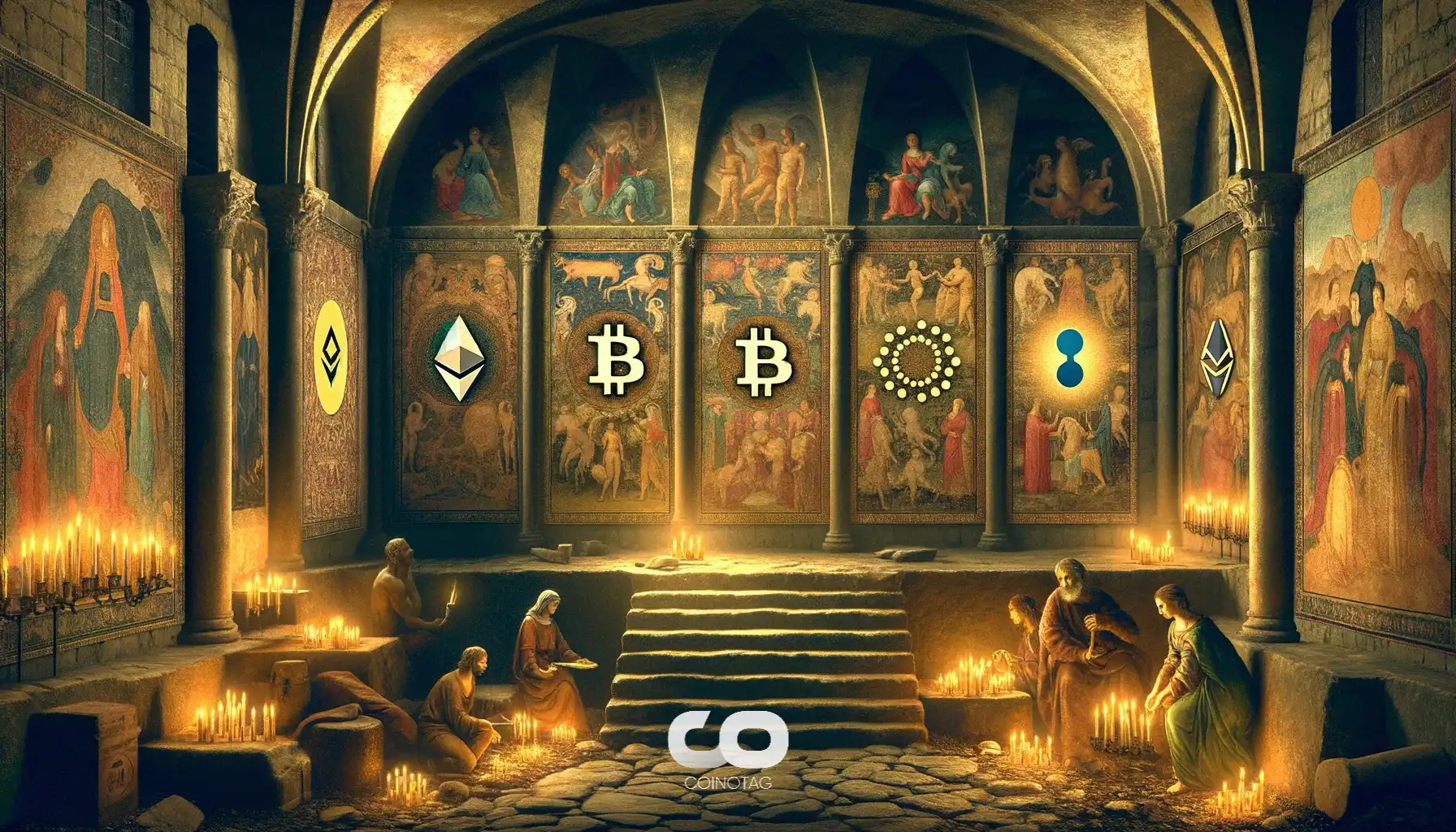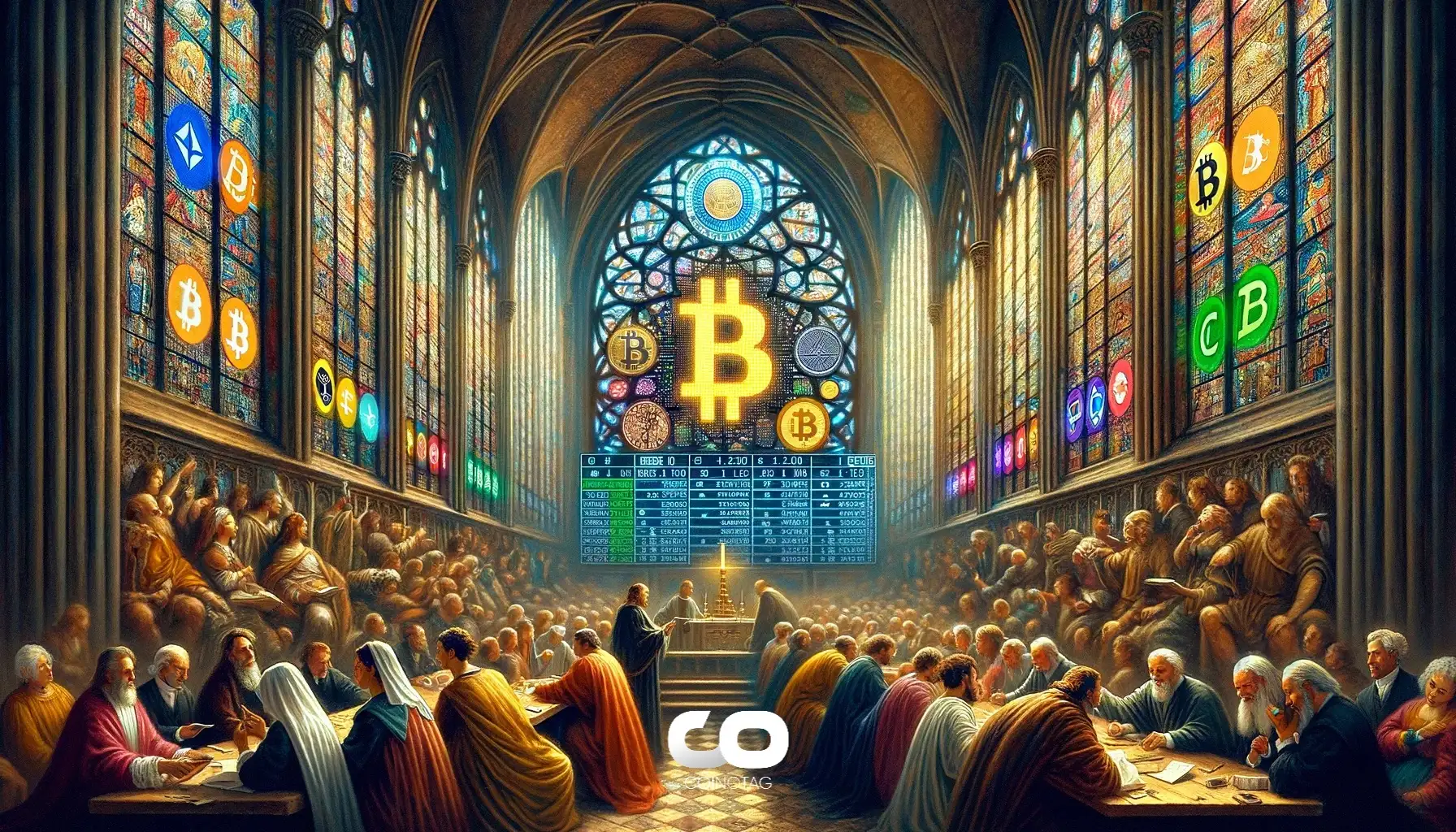Polkadot: Key Milestones and Achievements
In the world of blockchain technology, Polkadot has emerged as a groundbreaking platform that offers a new paradigm for interoperability between disparate networks. By exploring the key milestones and achievements that have contributed to its success, we hope you gain a better understanding of the platform’s significance and potential impact on the future of blockchain technology.
The Beginning of Polkadot (2016 – 2019)
The founding team and their vision for the platform
Polkadot was founded in 2016 by Dr. Gavin Wood, a co-founder of Ethereum and one of the leading figures in the blockchain space. Dr. Wood’s vision for the platform was to create a scalable and secure blockchain network that could facilitate interoperability between different blockchains.
Dr. Wood assembled a team of experienced developers and blockchain experts who shared his vision for the platform. Together, they set out to build a new kind of blockchain network that could offer unique features and capabilities not found in other blockchain networks.
One of the key features that the Polkadot team aimed to achieve was the ability to enable secure and seamless communication between different blockchain networks. The team recognized that one of the biggest limitations of existing blockchain networks was their inability to communicate with one another. Polkadot sought to solve this problem by developing a unique sharding technology that allowed for the parallel processing of transactions across multiple chains.
Polkadot’s initial coin offering (ICO) and fundraising
In 2017, Polkadot conducted its initial coin offering (ICO), which raised $145 million in funding. This was a significant milestone for the project, as it provided the resources needed to accelerate development and bring the platform to market.
The ICO was conducted through a Dutch auction mechanism, which enabled all participants to purchase DOT tokens at the same price. This ensured that everyone had a fair chance to participate in the fundraising process and that the price of the tokens was determined by the market.
The ICO was highly successful, and it quickly became one of the largest fundraisings in the history of blockchain technology. The funds raised during the ICO provided the Polkadot team with the resources they needed to accelerate development and bring the platform to market.
Development of the platform’s core technology
The Polkadot team worked tirelessly to develop the core technology that would power the platform. This involved creating a new consensus mechanism, known as the GRANDPA finality gadget, which would enable fast and secure transaction processing. They also developed a unique sharding approach, which allowed for the parallel processing of transactions across multiple chains simultaneously.
The development of the core technology was a significant challenge, as the team had to create new solutions for some of the most significant problems in blockchain technology. However, their hard work paid off, and by 2020, the team had completed the core development work, and Polkadot was ready for launch.
Polkadot’s launch and early adoption (2020)
In May 2020, Polkadot was officially launched, and the platform’s native token, DOT, was made available for trading. The launch was met with significant anticipation and enthusiasm from the blockchain community, with many seeing Polkadot as a potential game-changer for the industry.
As one of the most promising projects in the blockchain space, Polkadot was quickly adopted by early adopters and enthusiasts. The launch generated a lot of excitement, as Polkadot’s unique value proposition and potential for interoperability were highly anticipated.
Key features of the platform, including sharding and interoperability
Polkadot is designed to be a scalable, interoperable, and secure platform for decentralized applications (dApps). One of the key features of Polkadot is its ability to connect different blockchains together, making it possible for them to communicate and transact with one another seamlessly. This is achieved through its innovative sharding technology, which allows for the parallel processing of transactions across multiple chains simultaneously.
Additionally, Polkadot’s interoperability is made possible through its unique Relay Chain and Parachain architecture. Parachains are individual blockchains that connect to the Relay Chain, enabling them to communicate and transact with other Parachains and the Relay Chain. This approach to interoperability is highly scalable and flexible, enabling developers to create new chains and applications quickly and easily.
Early partnerships and integrations with other blockchain projects
In the early days of its launch, Polkadot formed several key partnerships and integrations with other blockchain projects. These collaborations were essential to driving adoption and expanding the reach of the platform.
One of the most significant partnerships was with Chainlink, a leading decentralized oracle network. The partnership integrated Chainlink’s secure and reliable oracle solutions into the Polkadot network, enabling developers to create new dApps and smart contracts that could leverage external data sources.
Another significant partnership was with Ocean Protocol, a blockchain-based platform for data sharing and analytics. The partnership enabled Polkadot to leverage Ocean Protocol’s data-sharing capabilities, which are critical to the development of many blockchain-based applications.
In addition to these partnerships, Polkadot also integrated with several leading blockchain networks, including Ethereum, Binance Smart Chain, and Kusama. These integrations enabled Polkadot to extend its reach and connect with a broader community of blockchain enthusiasts and developers.
Milestones and Achievements (2020 – 2022)
Development and release of Polkadot’s Parachain slot auctions (2020)
One of the most significant achievements of Polkadot since its launch has been the development and release of the Parachain slot auctions. These auctions enable projects to secure a Parachain slot on the Polkadot network, which provides them with access to the platform’s shared security and interoperability features.
The Parachain slot auctions were a significant milestone in the development of Polkadot, as they enable projects to launch their own independent blockchains on the platform. This is a critical step towards achieving Polkadot’s vision of facilitating interoperability between different blockchain networks.
Launch of the Polkadot Governance System (2020)
The launch of the Polkadot Governance system was another significant milestone for the platform. The Governance system enables stakeholders to participate in the decision-making process for the platform. This democratic approach to governance has been welcomed by the community, as it provides a way for users to have a say in the direction of the project.
The Governance system is designed to be inclusive and open, enabling stakeholders to vote on key decisions related to the platform’s development and direction. This approach to governance is a key differentiator for Polkadot, and it has been instrumental in driving adoption and growth.
Implementation of Polkadot’s Ecosystem Fund
Polkadot’s Ecosystem Fund was implemented to support the development of projects and applications on the platform. The fund is designed to provide financial support and resources to developers and projects that are building on the Polkadot network.
The Ecosystem Fund is an essential component of Polkadot’s strategy to encourage innovation and growth within the ecosystem. The fund has already made several significant investments in key projects and initiatives, and it is seen as a crucial way to drive adoption and expansion.
Launch of Kusama Parachain (2021)
Polkadot launched its first Parachain, Kusama, which was a significant milestone for the platform. The launch demonstrated the feasibility and potential of Polkadot’s innovative sharding technology and the ability to host multiple, interoperable blockchains. Kusama, as a canary network for Polkadot, has already attracted several innovative projects that leverage its advanced features and functionalities, providing a testing ground for new ideas and innovations before implementing them on the main Polkadot network.
Implementation of Nominated Proof of Stake (NPoS) (2021)
Polkadot’s implementation of Nominated Proof of Stake (NPoS) was a significant development for the platform. NPoS is designed to be more energy-efficient and secure than the previous consensus mechanism, providing additional benefits to the platform’s security and scalability. The upgrade to NPoS is expected to enhance the platform’s performance, and it has been well-received by the community.
Launch of Polkadot Treasury (2021)
The launch of the Polkadot Treasury was a critical step in the platform’s development. The Treasury enables stakeholders to propose and vote on funding for projects and initiatives within the Polkadot ecosystem, providing a democratic approach to funding. This approach to funding has been welcomed by the community and has already made several significant investments in key projects and initiatives, driving growth and adoption within the ecosystem.
Polkadot’s Achievements as of February 2023
Polkadot has achieved remarkable success in 2022, becoming the largest and most diverse ecosystem of purpose-built layer-1 blockchains and apps in just over a year since the launch of parachains in late 2021. The network now boasts 74 parachains, supporting over 300 unstoppable applications, with around 550 projects launched or under development. With more than 200 teams building on Polkadot’s technology stack, the network provides a shorter time to market and lower costs, upgradeability, and interoperability, making it the perfect home for rapidly evolving Web3 opportunities.
Polkadot’s diverse ecosystem spans beyond DeFi and NFT use cases, with teams leading the industry forward with bleeding-edge DeFi and NFT primitives, as well as parachains and dapps spanning the full spectrum of blockchain technology use cases, from social media to supply chain, identity, gaming, tokenized real-world assets, carbon credits, privacy, robotics, IoT, and more. The network’s identity parachain KILT Protocol has been adopted by dena, the German ministry of energy, and Energy Web, creating an identity registry for Germany’s energy market. The music industry also saw innovation on Polkadot with Public Pressure, which offers a music NFT marketplace and saw $2m in revenues in a matter of days after launching.
Polkadot’s industry-leading upgradeability features allowed it to complete a total of 15 seamless, forkless upgrades in 2022, and XCM’s launch delivered the magic of secure cross-consensus bridging to the world, ending the weakest link problem of previous-generation bridging technology. In addition, Polkadot’s launch of Collectives, giving people the ability to organize and act as a group, made a crucial function for Web3 possible.
Looking ahead, Polkadot is set to launch OpenGov on Polkadot, remove the weakest link problem with XCMv3, and launch parathreads and additional scheduling methods, making it easier to deploy the network’s next generation of blockchains. With a packed pipeline of projects set to launch their custom parachains in the coming months across a wide range of use cases, the broader Polkadot ecosystem in 2023 is incredibly strong, and 2023 is sure to be an exciting year for the community.
Bottomline
Polkadot is currently one of the most important and promising projects in the blockchain industry. Since its launch, it has attracted significant attention and adoption from developers, enterprises, and investors. The potential impact of Polkadot on the broader technology landscape is significant, with the platform’s unique approach to scalability, security, and interoperability providing a model for the development of more inclusive and community-driven blockchain projects. Moreover, the platform offers a unique governance system that enables stakeholders to have a say in the direction of the project. This democratic approach to decision-making has been welcomed by the community and has contributed to the rapid growth and adoption of the platform.





